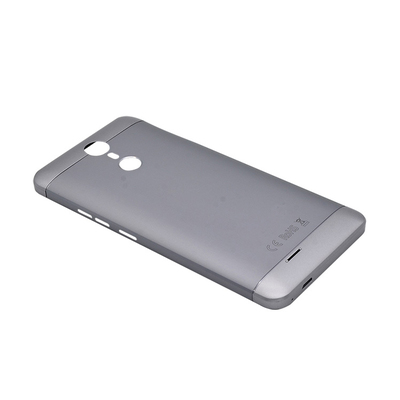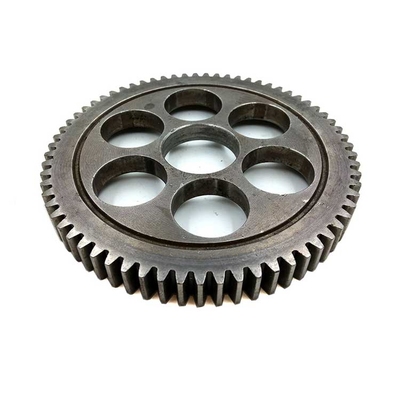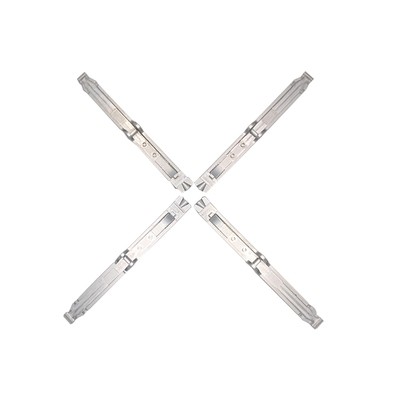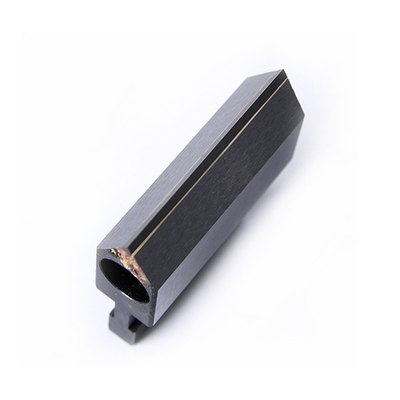Quality Evaluation Method of Sintered NdFeB Magnet
Sintered neodymium iron boron magnets are a kind of permanent magnets, because of their high cost performance, they are widely used in many fields, such as computer hard disks, nuclear magnetic resonance imaging, electric vehicles, wind power generation, industrial permanent magnet motors, consumer electronics and magnetic machinery, magnetic levitation technology , Magnetic transmission and other industries.
Sintered NdFeB magnets in today's society play an important role in promoting contemporary technology and social progress. The most comprehensive method of judging the quality of sintered NdFeB magnets: magnet performance; magnet size; magnet coating.
1. Magnet performance
1. Purchasing raw materials according to the requirements of high-end or mid-end or low-end sintered NdFeB according to the requirements of the company.2. Whether the production process is advanced or not directly determines the performance and quality of the magnet. At present, the most advanced technologies are scale casting (SC) technology, hydrogen crushing (HD) technology and jet mill (JM) technology. Small-capacity vacuum induction smelting furnaces (10kg, 25kg, 50kg) have been replaced by large-capacity (100kg, 200kg, 600kg, 800kg) vacuum induction furnaces. SC (StripCasting) rapid-setting cast sheet technology has gradually replaced large ingots (ingots with a thickness greater than 20-40mm in the cooling direction), and hydrogen crushing (HD) technology and jet mill (JM) have replaced jaw crushers and disc mills. The machine and ball mill (wet milling) ensure the uniformity of the powder and are beneficial to liquid phase sintering and grain refinement.
3. In terms of magnetic field orientation, my country is the only country in the world that adopts two-step compression molding. It uses low pressure vertical compression molding during orientation, and finally adopts quasi-isostatic compression molding. This is one of the most important features of my country's sintered NdFeB industry. .
4. The monitoring of the quality of the production process is very important, and it can be controlled by the detection methods such as SC sheet thickness measurement and JM powder particle size distribution. High-quality products depend on the control of the production process, but customers will be very confused, how to judge the performance of the products I buy? The Chinese Academy of Metrology has developed a variety of models of permanent magnetic material technology magnetic parameter measuring instruments. The pulsed magnetic field magnetometer (PFM) is a test instrument for testing ultra-high coercivity permanent magnets, mainly to adapt to the high coercivity permanent magnets required by the electric vehicle field and large permanent magnet motors.
Customers can select the NdFeB grades they need according to the magnet parameters Br (remanence), Hcb (coercivity), Hcj (intrinsic coercivity), (BH) max (maximum magnetic energy product), and these four The parameter is the standard for judging whether the product is produced in accordance with the customer's requirements.
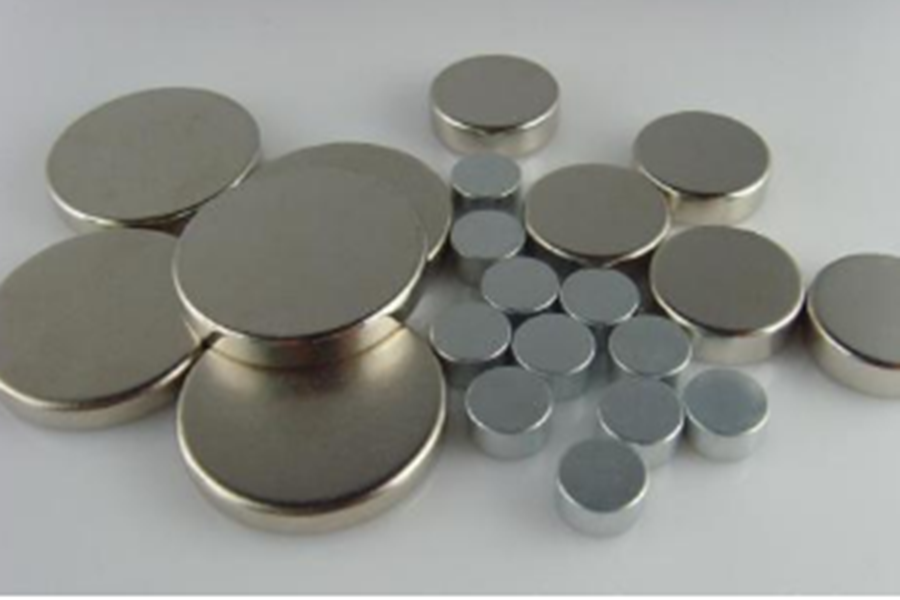
2. Magnet size
The practically used neodymium iron boron permanent magnets are of various shapes, such as discs, cylinders, cylinders (with inner holes); square plates, squares, square pillars; tiles, sectors, trapezoids, polygons and various Irregular shapes, etc. The permanent magnets of each shape have different sizes, and it is difficult to form them at one time during the production process. The general production process is: Mr. produces large (large size) blanks, after sintering and tempering, and then through mechanical processing (including cutting, drilling) and grinding, surface plating (coating) treatment, and then Magnet performance, surface quality and dimensional accuracy are tested, then magnetized, packaged and shipped out of the factory.The surface of the sintered NdFeB permanent magnet element is generally required to be smooth and reach a certain accuracy. The surface of the magnet delivered as a blank needs to be surface-grinded. Common grinding methods for square NdFeB permanent magnet alloys include surface grinding, double-end grinding, internal grinding, and external grinding. Cylinders are commonly used for coreless grinding and double-end grinding. Multi-station grinders are used for tile, sector and VCM magnets.
Whether a magnet is qualified, not only requires the performance of the standard, the control of dimensional tolerances also directly affects its application. The guarantee of size directly depends on the processing strength of the factory. Processing equipment is constantly updated with economic and market demand. More efficient equipment and the trend of industrial automation not only meet the increasing demand of customers for product accuracy, but also It saves manpower and cost and makes it more competitive in the market.
3. Magnet coating
Experiments have shown that 1cm3 of sintered NdFeB permanent magnets will be oxidized and corroded if they stay in the air at 150°C for 51 days. It is more susceptible to corrosion in weak acid solutions. In order to make the neodymium iron boron permanent magnet durable, it is required to have a service life of 20-30 years, and it must be subjected to surface anti-corrosion treatment to resist the corrosion of the corrosive medium to the magnet. At present, the manufacturing industry of sintered NdFeB permanent magnets generally uses methods such as electroplating metal, electroplating + electroless metal plating, electrophoretic coating, and phosphating treatment. An additional spacer is plated on the surface of the magnet to isolate the surface of the magnet from the corrosive medium. , In order to prevent the media from harming the magnet.1. Generally, zinc plating, nickel plating + copper + nickel, nickel plating + copper + chemical nickel plating are the main processes. Other metal plating requirements are generally applied to other metal plating after nickel plating.
2. Phosphating will also be used in some special cases:
(1) Phosphating is simple and easy to use when the NdFeB magnet product is too long due to the turnover and storage time and the subsequent surface treatment method is not clear;
(2) When the magnet needs epoxy adhesive bonding, painting, etc., the bonding force of the epoxy organic matter such as glue and paint requires the matrix to have good wettability. The phosphating process can improve the wettability of the magnet surface.
3. Electrophoretic coating has become one of the widely used anti-corrosion surface treatment technologies. Because it not only has a good bonding force with the surface of the porous magnet, but also has corrosion resistance such as salt spray, acid and alkali resistance, and excellent corrosion resistance. However, compared with spray coating, its resistance to humidity and heat is poor.
Customers can choose the plating layer according to their product work requirements. With the expansion of the application field of motors, customers have higher requirements for the corrosion resistance of NdFeB. The HAST experiment (also known as the PCT experiment) is to test the corrosion resistance of sintered NdFeB permanent magnets in humid and high temperature environments.
And how does the customer judge whether the coating meets the requirements? The purpose of the salt spray experiment is to do a quick anti-corrosion experiment on the sintered NdFeB magnet whose surface has been treated with anti-corrosion coating. At the end of the experiment, the sample is taken out of the test box and dried. Use your eyes or a magnifying glass to observe whether there are spots on the surface of the sample, and the change in color of the size box of the spot area.
Only by understanding the production process and the requirements of the product can the customer correctly judge the eligibility of the product. In short, it is the grasp of performance, the control of dimensional tolerances, the detection of coatings and the evaluation of appearance.
In terms of performance, Br (remanence), Hcb (coercivity), Hcj (intrinsic coercivity), (BH)max (maximum magnetic energy product) and demagnetization curve can be tested through performance; dimensional tolerance can be measured by vernier calipers Measure its accuracy; on the coating, the color and brightness of the coating can be observed with the naked eye and through the detection methods such as bonding force and salt spray experiment; the overall appearance, mainly with the naked eye or a magnifying glass, or an optical microscope (for products with a line degree less than 0.2mm), If the magnet has a smooth surface, no visible particles and foreign matter, no spots, no edges or corners, the appearance is qualified.
Link to this article: Quality Evaluation Method of Sintered NdFeB Magnet
Reprint Statement: If there are no special instructions, all articles on this site are original. Please indicate the source for reprinting:https://www.cncmachiningptj.com/,thanks!
 PTJ® provides a full range of Custom Precision cnc machining china services.ISO 9001:2015 &AS-9100 certified. 3, 4 and 5-axis rapid precision CNC machining services including milling, sheet metal to customer specifications,Capable of metal & plastic machined parts with +/-0.005 mm tolerance.Secondary services include CNC and conventional grinding, laser cutting,drilling,die casting,sheet metal and stamping.Providing prototypes, full production runs, technical support and full inspection.Serves the automotive, aerospace, mold&fixture,led lighting,medical,bicycle, and consumer electronics industries. On-time delivery.Tell us a little about your project’s budget and expected delivery time. We will strategize with you to provide the most cost-effective services to help you reach your target,Welcome to Contact us ( [email protected] ) directly for your new project.
PTJ® provides a full range of Custom Precision cnc machining china services.ISO 9001:2015 &AS-9100 certified. 3, 4 and 5-axis rapid precision CNC machining services including milling, sheet metal to customer specifications,Capable of metal & plastic machined parts with +/-0.005 mm tolerance.Secondary services include CNC and conventional grinding, laser cutting,drilling,die casting,sheet metal and stamping.Providing prototypes, full production runs, technical support and full inspection.Serves the automotive, aerospace, mold&fixture,led lighting,medical,bicycle, and consumer electronics industries. On-time delivery.Tell us a little about your project’s budget and expected delivery time. We will strategize with you to provide the most cost-effective services to help you reach your target,Welcome to Contact us ( [email protected] ) directly for your new project.

- 5 Axis Machining
- Cnc Milling
- Cnc Turning
- Machining Industries
- Machining Process
- Surface Treatment
- Metal Machining
- Plastic Machining
- Powder Metallurgy Mold
- Die Casting
- Parts Gallery
- Auto Metal Parts
- Machinery Parts
- LED Heatsink
- Building Parts
- Mobile Parts
- Medical Parts
- Electronic Parts
- Tailored Machining
- Bicycle Parts
- Aluminum Machining
- Titanium Machining
- Stainless Steel Machining
- Copper Machining
- Brass Machining
- Super Alloy Machining
- Peek Machining
- UHMW Machining
- Unilate Machining
- PA6 Machining
- PPS Machining
- Teflon Machining
- Inconel Machining
- Tool Steel Machining
- More Material

